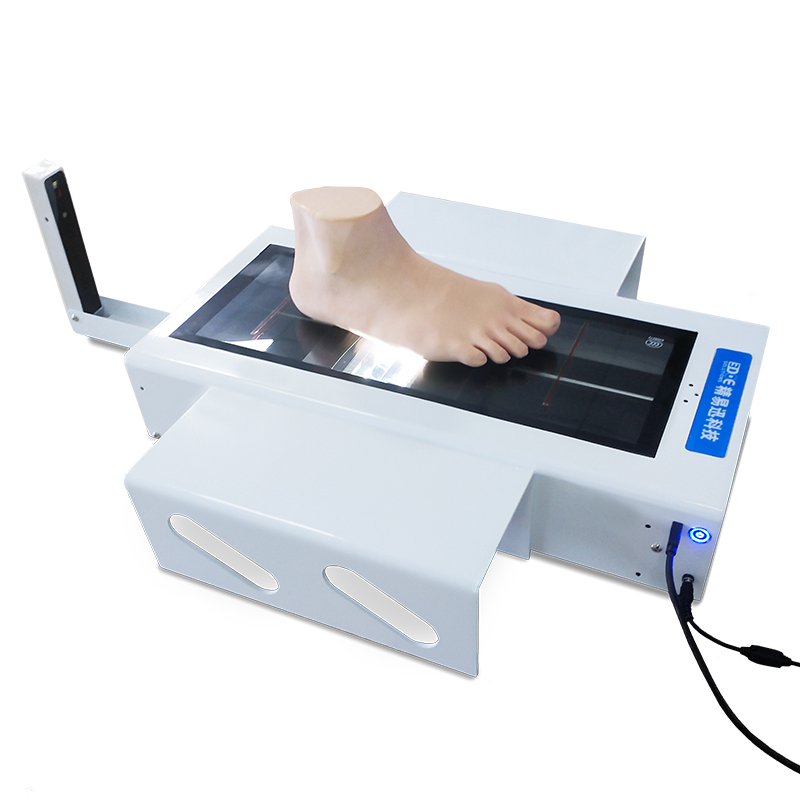The development of high-precision foot scanning technology is profoundly changing the model of foot health management, with laser scanning principles being one of the core technologies. Laser foot scanning technology utilizes emitted laser beams to capture the three-dimensional surface information of the feet, providing accurate data support for foot health protection.
The basic principle of laser scanning technology involves using a laser to emit beams that are directed at the surface of the foot. When the beam hits the foot, it is reflected. The scanner then receives the reflected light, recording the time and angle at which the light returns, enabling precise measurement of spatial coordinates of various points on the foot to generate a high-precision three-dimensional foot model. Compared to traditional photography or planar measurement techniques, laser scanning technology can more accurately capture subtle changes in the foot’s morphology, including aspects such as the arch height, toe length, and heel contours. This data is highly valuable for diagnosing foot abnormalities, customizing insoles, and designing corrective devices.

Laser foot scanning also offers advantages such as non-contact measurement. With laser scanning, users do not need to directly contact the measuring device, reducing measurement errors and operational complexity. High-precision laser scanners can generate a three-dimensional model of the entire foot in a short period of time, with data accuracy reaching sub-millimeter levels. This precision allows for both the overall foot shape to be reflected and the subtle structural changes to be captured, providing a scientific basis for early detection of foot deformities or degenerative conditions.
In foot health management, laser scanning technology has revolutionized the traditional model that combined experience and visual observation. Previously, foot shape evaluations were mainly based on manual measurements and observations, leading to significant subjective errors and inadequate accuracy. The three-dimensional data obtained from laser scanning can objectively display the foot’s morphology, providing reliable data for doctors, rehabilitation specialists, and insole designers. By combining data analysis and modeling techniques, personalized foot assessments and scientific management can be achieved.
Furthermore, laser scanning technology has provided convenient conditions for personalized correction and custom insole technologies. The three-dimensional foot model accurately presents the shape of the arch, toes, and heels, allowing designers to create corrective devices or insoles tailored to an individual’s foot type, improving both comfort and correction effectiveness. This model eliminates the blindness of traditional experience-based designs and enhances the targeting of foot health interventions.
